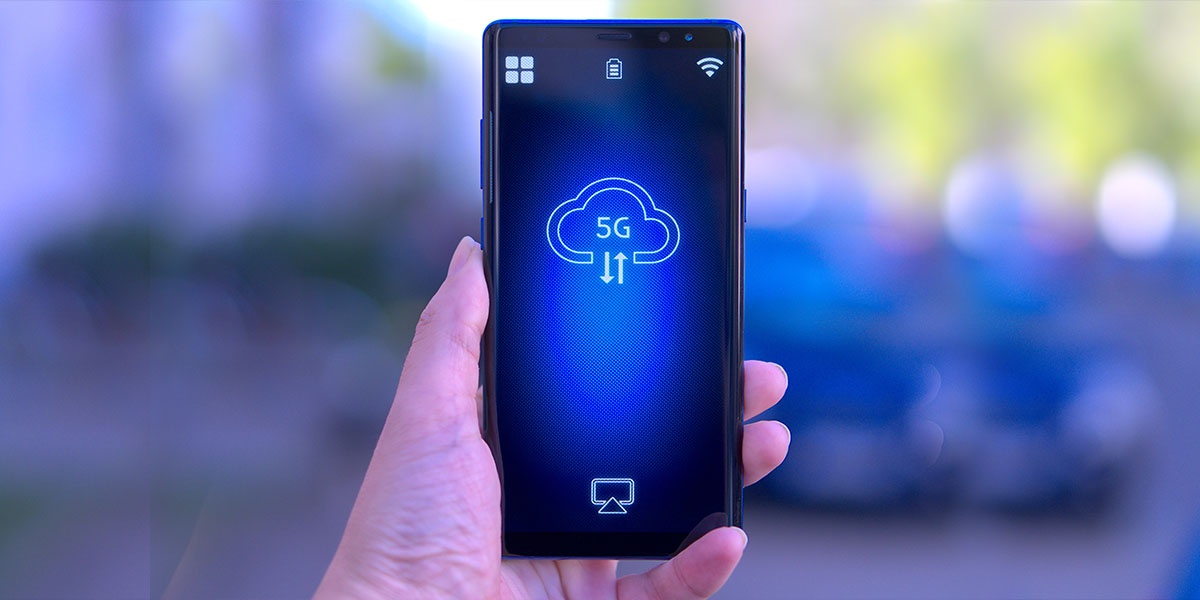Internet is a system of a globally connected network that uses (TCP/IP) to link devices worldwide. It has dramatically changed the world from the past few years. It has become one of the critical drivers of social evolution.
Mobile Internet refers to the use of the Internet via mobile devices. There are five generations of the mobile network:
 5G for Mobile
5G for Mobile
- 1G – Analogue cellular phones.
- 2G – Digital Fidelity cellular phones and higher data rates.
- 3G – Brought video telephony and mob data (e.g., CDMA2000).
- 4G – Enhanced 3g with high speed.
- 5G – Fastest wireless technology for mobile internet networks.
5G is the fifth and most advanced generation of the mobile Internet introduced in 2019. It will ultimately replace or at least augment your 4G LTE connection. It offers faster and reliable connections on smartphones than ever before. The main growth compared with today’s 4G is that beyond data speed improvements, new IoT and communication uses would require new sorts of enhanced performance. The network is expected to supercharge IoT, providing the infrastructure needed to carry a vast amount of data for a smarter and more connected world. 5G is founded by the emerging five new technologies.
1- Millimeter Waves:
Your smartphones and other electronic devices in your home use particular frequencies on the radio frequency spectrum, typically those under 6GHz, but these frequencies are commencing to get extra crowded. As more devices are connected to the internet and become online, the only thing carriers can do is to compress the increased bits of data on the same amount of radio frequency spectrum. This results in slow service and more connections being dropped. The solution for this is to use shorter millimetre waves ranging from 30-300 GHz. This segment of the spectrum has never been used before for mobile devices, and introducing it means more bandwidths for everyone.
2- Small cells:
Today’s wireless network connections-depend upon very large high powered cell towers to broadcast their signals at large distances, but higher frequency millimetre waves find it hard to travel through obstacles, which means if you move behind the one you lose your signal. Small cells have thousands of low power mini base stations, which are close together and solve this problem. They form a sort of relay system and transmit the signals around the obstacles.
3- MIMO – Multiple Input Multiple Output:
Today 4G base stations have multiple ports for antennas that handle all cellular traffic, but MIMO base stations can support hundreds of ports, which will result in an increase in the overall capacity of the network to handle more traffic.
4- Beamforming:
It is like a traffic signalling system for cellular signals. Instead of broadcasting in every direction, it allows a base station to send a focused stream of data to a specific user. This is more efficient and prevents interference. In this way, stations can handle an increased incoming and outgoing of the data streams all at once.
5- Full Duplex:
While using a walkie talkie, we need to take turns talking and listening to communicate. The same is the case with a basic antenna. It can perform only one job at a time, either transmit or receive. This is because of the tendency for a radio wave to travel both forward and backward along with the same frequency. Silicon transistors are used to enable high-speed switches that halt the backward roll of these waves. That means there’s a lot more getting done on each track a whole lot faster.
5G operates on three different spectrum bands.
1- Low-band spectrum can also be expressed as a sub 1GHz spectrum. It offers excellent coverage, wall penetration, and are ideal for full outside and in-depth coverage.
2- Mid-band spectrum provides faster speed and low latency as compared to other small bands.
3-High-band spectrum delivers tremendous performance for 5G. It offers lower latency with speeds as high as 10Gbps.
Now the basic question here is How Will 5G Work?
Most of the operators will integrate the existing 4G network with 5G to provide a continuous connection.
There are two primary components of a network.
The Radio Access Network connects mobile users and wireless devices to the central core network with the help of few facilities.
- Small Cells
- Towers
- Masts and dedicated in-building
- Home systems
 5G-and-How-it-works
5G-and-How-it-works
For a short-range, small cells are the dominant feature of the 5G network. It can provide a wide range of connectivity to the user by distributing clusters of cells to the user’s place. Clusters of small cells are referred to as 5G Macro Cells that have multiple connections to receive and send more extended data simultaneously. In this way, an increased number of users are able to connect to the network simultaneously and maintain a high throughput.
The Core Network has distributed its servers across the network to improve the response time. All the mobile voice, data, and internet connections are managed by the mobile exchange and data networks. The advanced features of the 5G network will be managed by the core network.
While there will ultimately be much more to 5G than just faster download speeds for our smartphones, the truth is, that’s what most people are interested in right now. It is considered to be a hundred times faster than the current 4G technology.
- It can hit 20Gbps downlink and 10Gbps uplink per mobile base station.
- Will bring the latency down up to 1ms (theoretical).
- It can download 25 songs in under a second at 1Gbps.
It can operate in the millimetre-wave (a super high-frequency spectrum that ranges from 24 to 100 GHz).
Although 5G will inevitably change the way, we communicate with each other and use media, companies have already taken up the mission to contribute the best 5G supporting gadgets as early as possible.
Which phones support 5G?
Here is the list of 5G phones currently out.
- Samsung Galaxy Note 10
- Samsung Galaxy S10
- Samsung Galaxy Fold
- Samsung Galaxy A90
- LG V50 Thi
- Moto Z3
- Moto Z4
- Moto Z2 Force
- OnePlus 7 Pro 5G
- OnePlus 7T Pro 5G McLaren
- Huawei Mate X
- Huawei Mate 20 X 5G
- Oppo Reno 5G
- Xiaomi Mi Mix 3 5G
- Axon 10 Pro 5G
- Nubia X 5G





